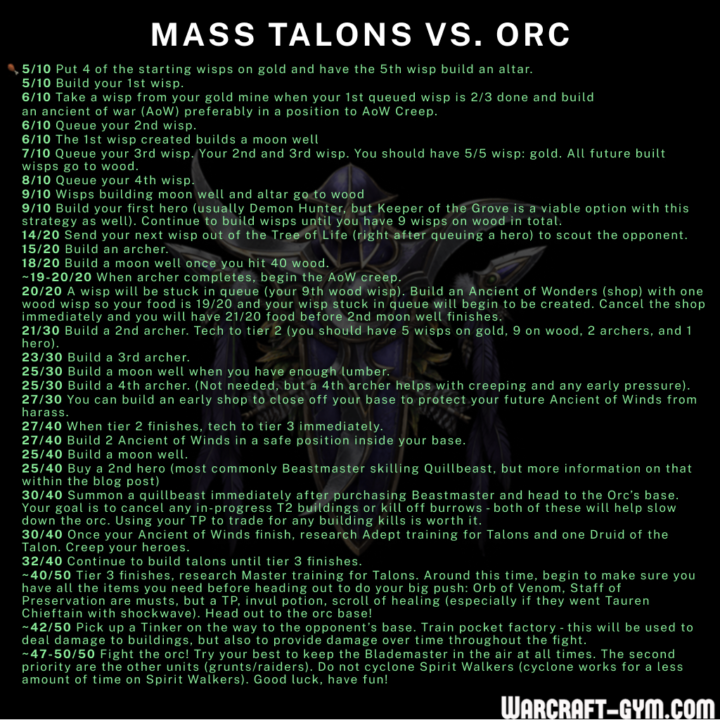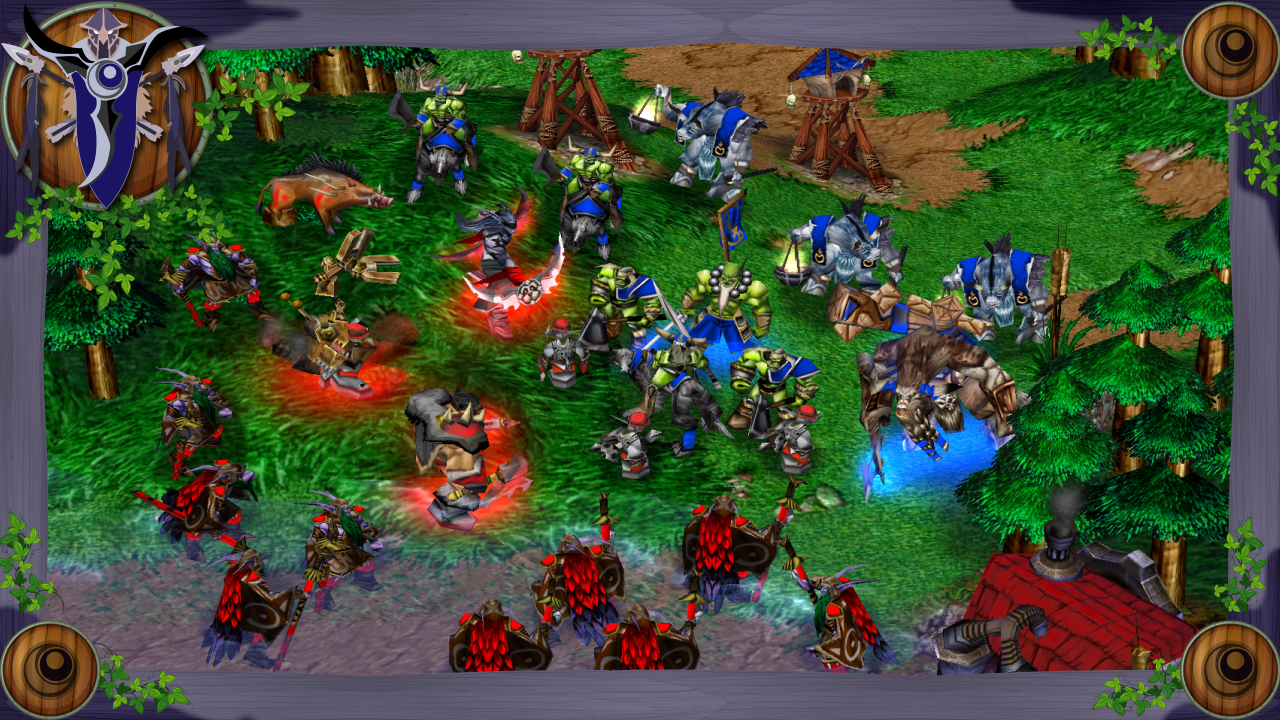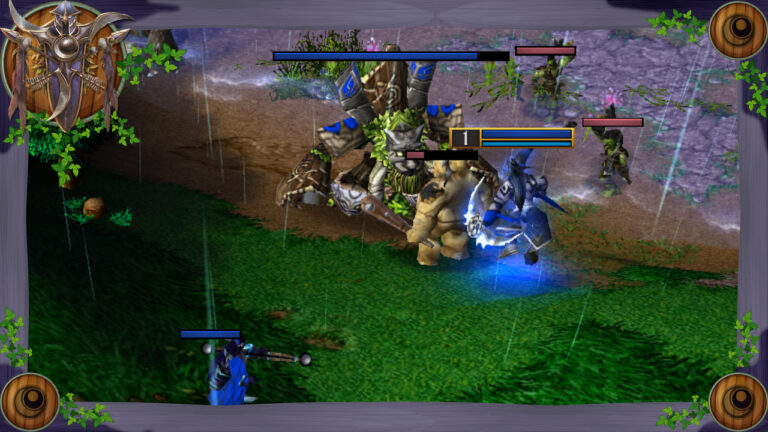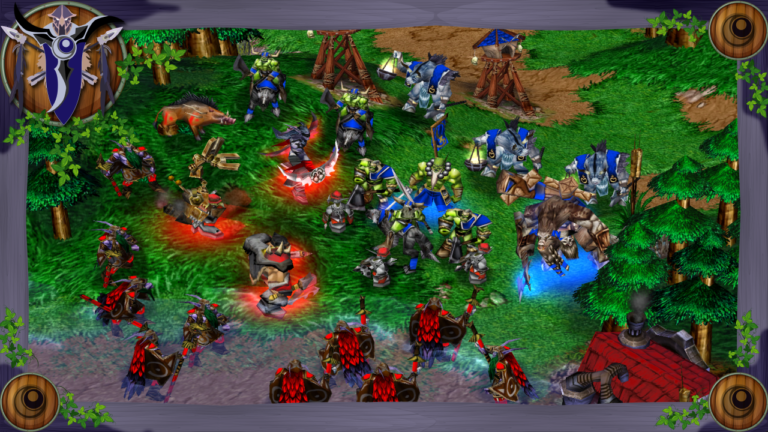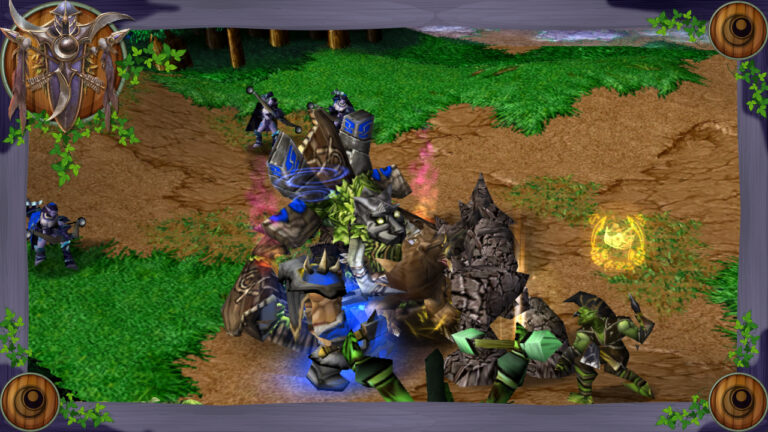Mass talons versus Orc ran the Night Elf versus Orc meta for years, especially during the lull of patch 1.26. There’s probably someone in the Gym discord who could tell you the lore of talons and how Moon or some Night Elf hipster started it, but that’s not what this article is about.
This strategy takes practice and understanding of the execution needed to make this successful. This guide won’t outline everything you need to know, and I recommend you watch replays (which I’ll try to include as many as I can find) and practice it yourself to better understand it. This guide will attempt to provide context to the build order, the build’s strengths and weaknesses, and help you understand your opponent’s mindset and counters. This guide is not the final say on this strategy. Many high level players may play this same build, but with only one archer. Some others use their talons for map control and focus on creeping and cancelling expo attempts instead of fighting. We won’t focus on those variations, but this once you learn from this guide, you can eventually start to branch out into other variations, as well as creating your own.
Guide overview
Strengths
…and why this strategy works
- Takes advantage of Orc not having great dispel. Night Elf’s workers can dispel for pretty cheap and they have dryads (which are magic immune), Undead’s Destroyers gain power from dispel (“Devour”), Human have priests (2 food) with dispel, as well as the potential to have spell breakers (magic immune) be a good part of their army. Orc have Spirit Walkers and Shaman, which aren’t totally useless of course, but they struggle compared to the above units when it comes to dispel.
- Shaman are only usually used against talons when the Night Elf picks Keeper first. We’ll get into that variation later, but Shaman aren’t the best counter to talons because their single unit dispel (“Purge”) is not enough to keep up with mass cyclone. Even if you have the perfect situation of having a handful of Shaman at full mana, between cyclones and Keeper spells, there’s only so much you can dispel.
- Which brings up the advantage of Spirit Walkers: Disenchant. Disenchant is an area of effect dispel and can dispel multiple cyclones at the same time. But there’s a few issues with Spirit Walkers that make them not ideal dispel spellcasters. 1) They’re 3 food (as compared to Shaman and Priests, which are 2 food). 2) Disenchant costs 100 mana 3) They take a bit more to get online compared to Shaman, as well as Dryads and Priests if we’re still comparing (8 more seconds build time than Shaman AND Disenchant requires Adept training, which is a 60 second research)
- Strength in numbers, less resources PER unit. As opposed to doing an Ancient of Lores/bear build, losing a single unit to many of the Orc’s crowd control (stomp, ensnare, purge, lightning orb, hex) doesn’t hurt as much in this strat. Of course, hero kills still sting, but Orc’s ability to punish the cost of bears (a 4 food unit costing 255 gold, 80 lumber, 35 sec build time) doesn’t sting as much as losing a Druid of the Talon (130 gold, 20 lumber, 22 sec build time).
- If Orc goes Blademaster, grunts, raider, walker build, the lack of piercing damage, makes it harder to kill off talons. Plus, it’s mostly a melee-based army. And with your hero choices (more about that later), you typically can create a wall against this melee-based army to protect your talons.
- Cyclone disables units/heroes for relatively cheap. 150 mana cost is cheaper than some other master-level training “disables” like possession and polymorph. Note: Druid of the Talon with master training has 400 mana.
Weaknesses
…and times when you should abandon the strategy
- This strategy is really meant to only counter a standard Orc build including Blademaster and grunts (as well as usually raiders and spirit walkers). While there may be transitions from the Orc after this (such as making headhunters or doing a unique counter build with demolishers), for the most part this strategy should work well if executed correctly versus Blademaster grunt openings. But this build should not be attempted versus Far Seer headhunter builds.
- Requires hitting close to perfect timing in terms of aggression and scouting. Part of the power of this build is catching your opponent at a time where they don’t have all the tools they’d like to defend against a push from 50 food of master talons and 3 heroes. Sometimes this is in result of hitting an earlier timing and canceling T2 orc buildings or burrows (typically right after picking up your 2nd hero from the tavern). Sometimes this is just because your build was sharp and you didn’t skip a beat when executing this build. But even 30 seconds of delayed time can add up and give the Orc enough time to get their defenses ready, whether that’s buying an Invulnerability potion on their Blademaster, getting more mana on their Spirit Walkers for dispel, getting more mana on their TC, getting their TC to level 3 with an additional creep camp, getting a tower (or 5… see next bullet point) set up at their expo, and the list goes on. This also applies for scouting. You want to be scouting for where the orc army is on the map while you’re creeping, as well as making sure no expos or towers are going up that you don’t cancel. The more time that passes by, the harder it will be to actualize the strength of this strategy.
- Reinforced defenses. Towers. This strategy often times has you choosing Tinker as a 3rd hero for pocket factory, and while pocket factory is good versus towers and buildings in general, you don’t want to be in a situation where you missed an expo get up that is defended by 5 towers. This puts you in a position where you can’t take a fight there and it puts the Orc in a position to not need to take a fight because eventually, they will be able to outproduce you. The main counter to reinforced towers are catching them before they go up. It becomes a different game once you’re fighting a heavily defended Orc who has two bases – and that guide won’t cover that but I’ll provide some replays that have games that go into these sort of late game situations.
Hero choices:
In the build below, we’ll mention some heroes, but there are a lot of viable hero choices and its best to understand their strengths in this matchup.
The most common combination: Demon Hunter, Beastmaster, Tinker
- Demon Hunter is a force alone. Can fend off Blademaster harasses. Can creep very well. Mana burn scales super well in this strategy (being able to mana burn Tauren Chieftain + spirit walkers will be huge). Tanky enough to not get caught out too easily, especially in the early.
- Beastmaster has arguably one of the better summons with the Quillbeast. The piercing damage of the quillbeast is great vs buildings and you’ll often use your Beastmaster and your Demon Hunter to cancel T2 Orc buildings, since by the time you show up there shouldn’t be any dispel. Also has hawk summon that can reveal Blademaster later in the game.
- Tinker is a great level 1 hero because pocket factory is a good spell out of the gate. Not only is it good against buildings and pecking damage, the clockwerk goblins it creates will create more of a frontline for you to protect your talons.
Besides this hero combination, here are some other hero choices and their strengths:
- Keeper of the Grove is a good choice with this strategy – seen mostly first and third, but also could be second. His strength as a first hero choice is map control with the threat of entangle, harassing ability with entangle, and most likely forcing Shaman (since Shaman dispel gets out quicker to deal with entangle) which are worse than Spirit Walkers when it comes to dispelling cyclone later on. Besides being a first hero choice, he makes a good hero in this strategy in general due to adding more lockdown with entangle and having additional summons to fight. Sometimes Spirit Walkers can get off very efficient disenchants versus these spells, but these dispels are still very precious to the orc and having to use one on entangle feels rough. Typically if you go Keeper first, it will be Demon Hunter second and Tinker third. You also won’t be able to do as good of a job canceling T2 Orc buildings as you could with Beastmaster 2nd, but in certain situations (depending on timing and where you’re on the map) you can still consider trying.
- Naga 2nd with Demon Hunter is a tale as old of time and is definitely viable to get some pressure done in the mid game utilizing the two heroes’ damage to catch units or in-progress building. Forked lightning isn’t a bad spell itself as the game goes on.
Considerations when fighting
- Turn off faerie fire auto-cast. Cyclone costs a lot of mana so you want to make sure you’re stocking up and not wasting any mana you don’t need to. Granted, faerie fire is not a waste. It’s a good spell. But faerie fire usage should only be done if you can manage to manually cast it and focus fire units with the faerie fire on. This may take a bit of extra micro, and should be a bit lower priority than casting efficient cyclones.
- Mana burn the Tauren Chieftain as much as possible to prevent shockwaves. A Tauren Chieftain will usually be able to get a nice shockwave off at the beginning of the battle, but your goal is to make sure is to keep draining the TC’s mana to prevent as many shockwaves as possible. Of course, don’t mana burn a TC if they have 10 mana. A shockwave costs 90 mana, so just ensure they’re not getting close to that number.
- Do not cyclone Spirit Walkers. Spirit Walkers have the passive Resistant Skin ability. This causes some spells such as Cyclone and Slow to have a much shorter duration when used on a Spirit Walker. It’s not worth cycloning a Spirit Walker. Mana burning them is permitted and encouraged though.
- Put your pocket factory behind your army or in a safe spot that doesn’t allow it to be focused easily. You probably have two pocket factories to use in your first engagement – try to make them count and get the full value of them.
Build order
